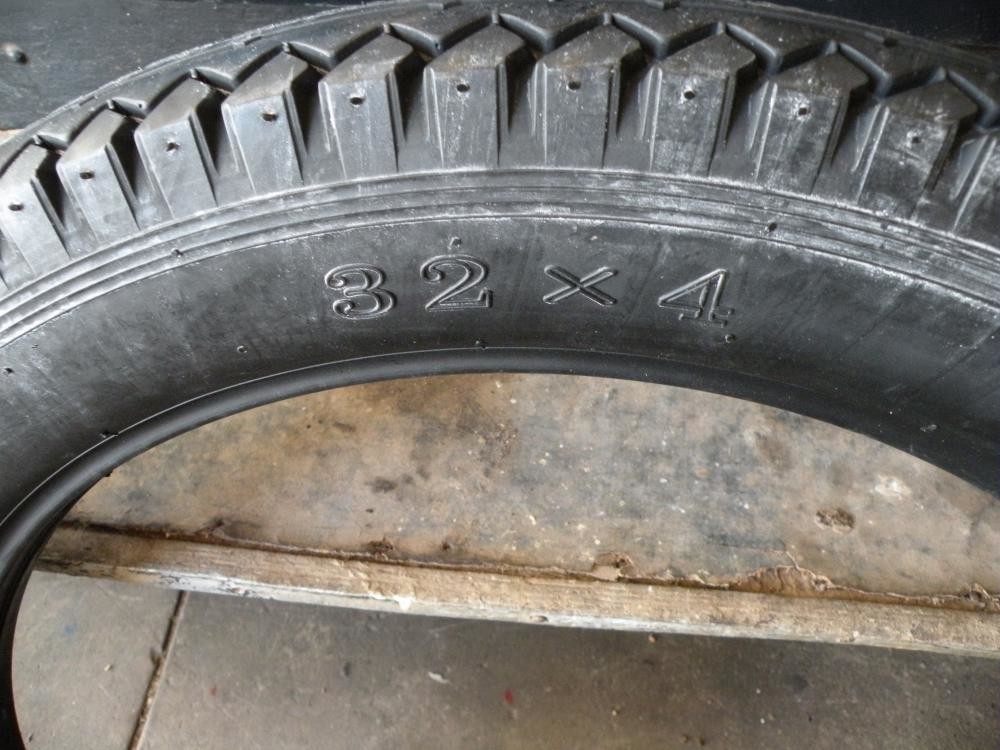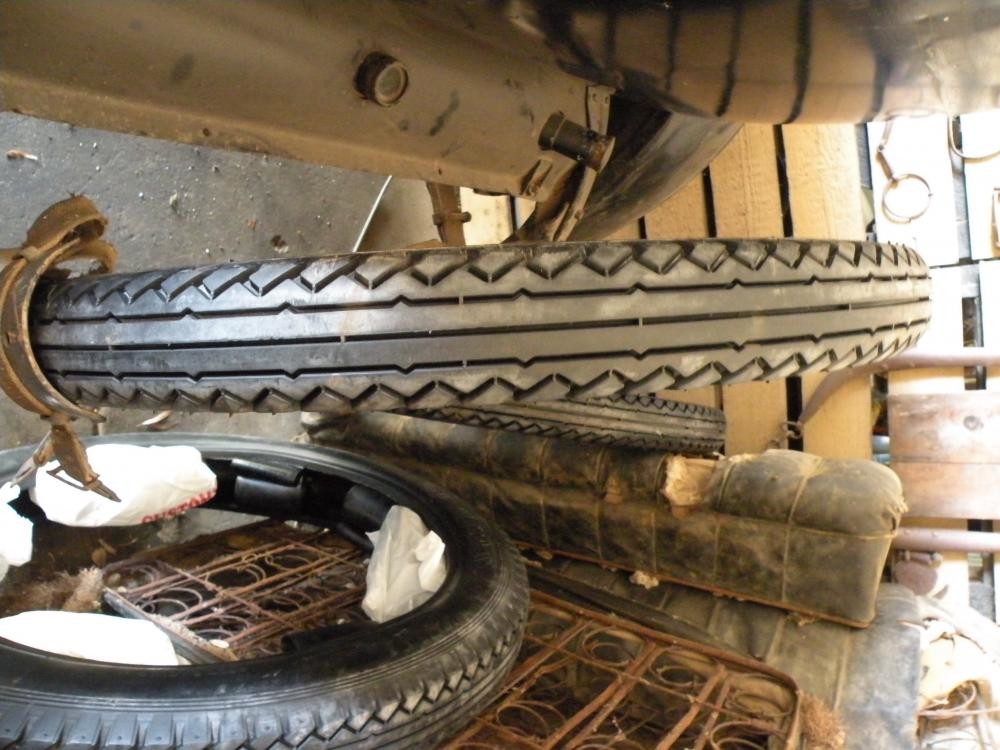You must be logged in to rate content!
4 minute(s) of a 173 minute read
9-5-2017
My new 32 X 4 (400 X 24) tyres arrived this morning. First impression is that they look very narrow but hopefully by the time they are mounted on the rims and inflated they will be OK. These are what Studebaker specified in 1920 so who am I to argue. I should get the wheels back tomorrow so I will not have too long to wait.


Thank you Lyndon
Welcome to the VSCC of Victoria, Please do make your self known if attending a club event.
Your photograph of the 1923 Light Six is very interesting. Just looking at it quickly I can see a number of differences. How the doors are hinged, one piece windscreen, cowl vent, the moulding around the waist line, side lights below the windscreen and the small creases in the radiator surround in line with the bonnet (hood) hinge for starters. Interestingly while it is 1923 with the cast iron cylinder head motor it does have the same American Bosch magneto ignition. Perhaps this was considered preferable by the Australian buyers along with the Budd wire spoke wheels.
I agree Vintage "light cars" do have a special appeal. No soomer had I bought the Studebaker than I was offered a delightful1922 Humber 8/18 Chummy by a dealer in Belgium. Sorry "Too Late".....
For anyone interested
At this time it does not seem a lot of money considering that a lot of the hard work is done already.
Hello Scott
I for one really appreciate your input and your knowledge. I think that many of the Australian car buyers in the 1920s were influenced by British tastes so that both wire spoke wheels and magneto ignition were considered indicators of a "quality" car. e.g. My model Lagonda (a Rapier) still had magneto ignition right through to the end of the 1930s. I know that my Studebaker has led, in some ways, a "sheltered" life. All four doors shut with a definite "clunk" as more usually associated with coach-built bodies. and if there is any rust in the body I am yet to discover it. Ultimately I will need to find some replacements for rubber grommets that go at the base of the windscreen pillars. Does anyone have any suggestions of a possible source. My car obviously (originally in 1920) had quite a bit of Nickel plating; on the radiator surround, wheel hub caps, windscreen pillars & frame(s) and door handles (on the outside only). It has a Boyce Motor Meter, temperature gauge on the radiator cap, this too is nickel plated, but not the screw on cap. It does not have the Studebaker insignia on the front side so may have been an after market addition. My Packard Single Six had the Packard Script on the front side of its Motor Meter where-as the one on the Studebaker is labeled "Universal Model".
I am looking forward to getting my wheels back from being painted, these are Black as I believe they would have been originally. I can then mount the tires and get the car standing on them again. I am in two minds about the Nickel plating, whether to have it redone, paint over it, or leave it alone but I have plenty of time to think about it. I started to remove the head nuts yesterday and soak the studs with penetration oil. I am not sure how to tackle removing the cylinder head as it certainly looks fragile even if it is not. The spare head that came with the car is a mass of welds. and I would be reluctant to try using it. All or any suggestions would be welcome.